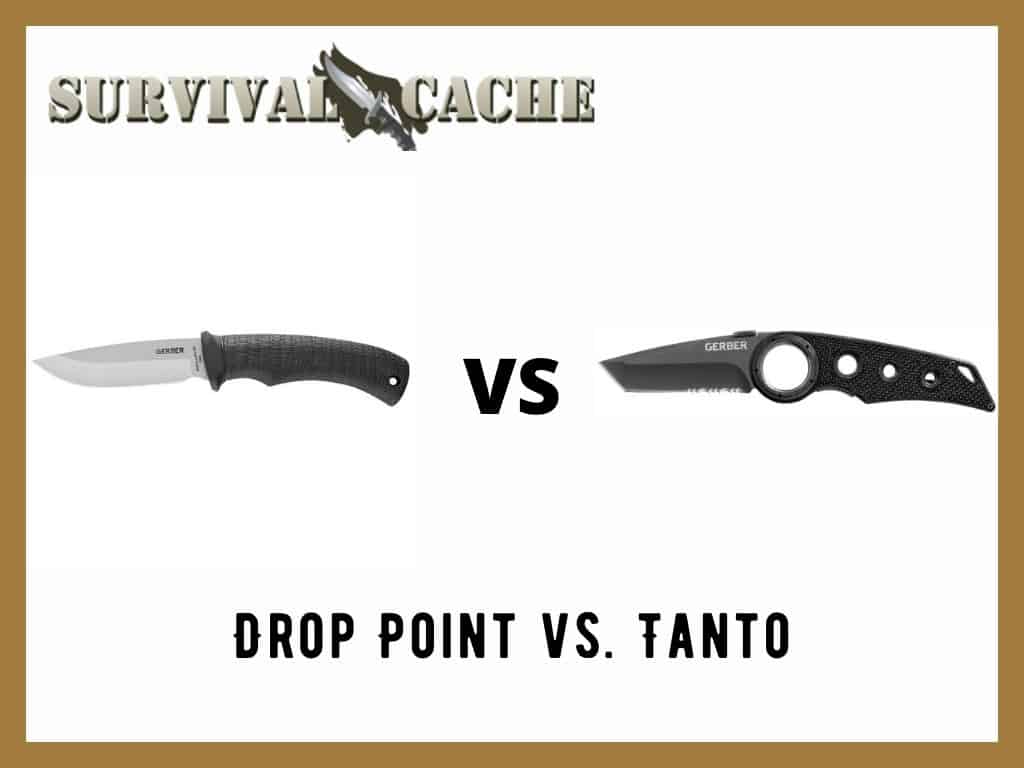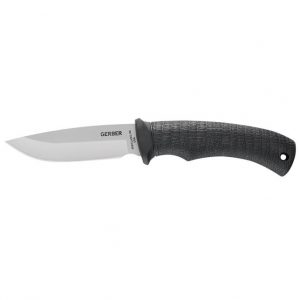There are a lot of different knife styles in the world.

A lot.
Some knives have designs for very specific tasks while other designs lend themselves to being a jack of all trades.
When it comes to survival blades, two designs are rather popular and I hear about them quite often.
Those types are a drop point and a tanto.
I wanted to take a little closer look at these two styles comparing their designs as it relates to survival uses. I am going to start with the drop point.
SKIP AHEAD
Drop Point
A drop point is a very common and popular outdoor knife.

In this style, there is a gradual downward slope along the spine of the knife starting at the handle and ending at the tip of the blade.
From the tip, the knife swoops downward to create a belly before meeting up with the straight cutting edge.
All of the years I spent hunting and fishing, I primarily used a drop point knife. The belly on a drop point makes it an excellent choice for skinning and processing wild game and fish.
While the tip is not as strong as the tanto, it can still get the job done. It is easier to control in tight spaces when processing game. This means you do not have worry as much about puncturing guts or other areas you would rather be left intact.
It is also much easier to hold the knife near the tip to use it and the belly more precisely.
The drop point can penetrate material but is primarily great at cutting and slicing which makes up the majority of cutting tasks.
Pros
- Great all around utility knife
- One continuous cutting edge makes it an easy knife to sharpen
- The knife is easy to control when processing game and other tasks
Cons
- Weaker tip than the tanto
- Will penetrate materials but not as well as a tanto
Tanto
The modern tanto was popularized by the company Cold Steel and was inspired by the katanas and shorts swords used by the Japanese.
These Japanese weapons featured very similar tips and proved to be effective combat tools.
The tanto’s unique design makes it quite recognizable and it easily stands out among other knives.
Here is a photo of my Gerber Remix sporting a tanto blade.

As you can see, from the tip the blade drops sharply downward creating a small straight edge. From here it creates another sharp angle into the cutting edge of the blade.
This design creates an incredibly strong knife tip. Because of this, the tanto tip can be used in ways a typical knife tip cannot and it makes it exceptionally well suited for penetration tasks.
The stronger tip is well suited for penetration tasks, prying, digging, and scraping.
The shape of the front of the blade also lends itself to being used as a chisel or scrapper.
This all sounds pretty good but the tanto is not without its negatives.
The absence of a belly on the blade means it is not well suited for skinning or processing game which is a pretty important outdoor task.
Its other downfall, for some, is that it has two different cutting edges at different angles. This can make the sharpening process more time consuming and frustrating.
Pros
- Effective at penetrating thick, tough material
- A strong tip allows the tanto to dig, pry, chisel, and scrape
Cons
- The absence of a belly on the knife means it is not a great slicing knife
- Two separate cutting edges will take more time and attention to sharpen
Final Thoughts
So is one of the styles better than the other?
It all comes down to what the knife will be used for and your personal preferences.
If you are looking for a knife that is primarily good at penetrating tasks and will be used a lot in that manner, then the tanto is a good choice.
On the other hand, if you never know what you are going to run into and are looking for a knife that is a jack of all trades, then a drop point knife would be a better option.
Thanks for reading and stay sharp!
Let us know your thoughts on tantos and drop points by sounding off in the comment section below!

